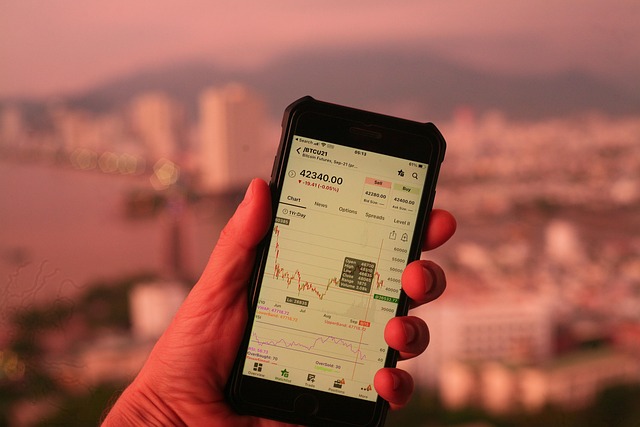What is XRP Futures Trading in 2025: Complete Guide
Author: Jameson Richman Expert
Published On: 2025-10-31
Prepared by Jameson Richman and our team of experts with over a decade of experience in cryptocurrency and digital asset analysis. Learn more about us.
What is XRP futures trading? In short, XRP futures trading refers to buying and selling derivative contracts whose value is tied to the cryptocurrency XRP (Ripple). This guide explains how XRP futures work, the different contract types (perpetual vs. expiring futures), how leverage and margin affect positions, practical examples, risks, strategies, and the best platforms and tools to use in 2025. Whether you’re a beginner wanting to understand derivatives or an experienced trader seeking advanced tactics, this article gives actionable, step-by-step information and relevant resources to trade XRP futures responsibly.

Table of contents
- What are futures and how do they apply to XRP?
- Types of XRP futures contracts
- How XRP futures trading works (margin, leverage, liquidation)
- Pricing, funding rates, and settlement mechanics
- Where to trade XRP futures (recommended platforms)
- Practical trading examples and calculations
- Popular XRP futures trading strategies
- Risk management and position-sizing rules
- Regulation, taxation, and 2025 market considerations
- Tools, charting, and automation
- Glossary & FAQs
- Further reading and authoritative resources
What are futures and how do they apply to XRP?
Futures are standardized derivative contracts obligating the buyer and seller to transact an underlying asset at a future date and a pre-agreed price. In crypto markets, XRP futures let traders speculate on the future price of XRP without necessarily owning the token. They enable:
- Leverage: Amplify gains (and losses) by controlling a larger notional with smaller capital.
- Hedging: XRP holders can lock in prices to protect against downside.
- Arbitrage and market making: Capture price differences between spot and futures markets.
Because futures are derivatives, they have unique mechanics—funding rates, margin requirements, and settlement types—that differ from spot XRP trading.
Types of XRP futures contracts
Not all futures are the same. Common contract types you’ll encounter in XRP futures trading:
- Perpetual contracts (perps): No expiry. They mimic spot price using a funding rate mechanism to anchor perp price to spot. Perps are the most popular derivative in crypto (available on most exchanges).
- Quarterly/expiry futures: Contracts that settle on a predefined date (e.g., quarterly). Settlement can be cash-settled (in USD or USDT) or physically delivered (rare for crypto).
- Inverse vs. linear contracts: Linear contracts are quoted and settled in stablecoins (like USDT), while inverse contracts are quoted in crypto (e.g., BTC-denominated). For XRP, most USDT-margined linear contracts are common.

How XRP futures trading works (margin, leverage, liquidation)
Understanding the core mechanics is crucial to avoid costly mistakes.
Margin types
- Initial margin: Capital required to open a position.
- Maintenance margin: Minimum equity to keep the position open; falling below this triggers liquidation.
Leverage
Leverage lets you control a much larger position than your account balance. For example, 10x leverage means a $100 balance controls a $1,000 notional position. Higher leverage increases both profit potential and liquidation risk.
Liquidation
Liquidation occurs when your equity drops below maintenance margin. Exchanges close or partially close your position to prevent negative account balances. Always check an exchange’s liquidation and insurance fund policies.
Pricing, funding rates, and settlement mechanics
Perpetual contracts use a funding rate to anchor perpetual prices to spot. When the funding rate is positive, longs pay shorts; when negative, shorts pay longs. Funding rates are dynamic and reflect market sentiment and basis (difference between perp and spot price).
Funding rate example
If the perp trades at $0.80 and spot is $0.78, longs might pay funding to shorts to push the perp price down toward spot. Funding is typically exchanged every 8 hours on many platforms.
Settlement
Expiry futures settle at the contract’s fix price on expiration. Cash-settled futures credit/debit your stablecoin or fiat balance, while physically settled ones would transfer the underlying asset (rare for XRP futures on major exchanges).
Where to trade XRP futures (recommended platforms)
Choose reputable exchanges with strong order books, robust risk controls, and transparent fee schedules. Examples with XRP futures markets include:
- Binance Futures — Large liquidity and many tools. (Sign up: Create Binance account)
- MEXC — Competitive fees and rising liquidity. (Sign up: Register on MEXC)
- Bitget — Strong copy-trading and derivatives features. (Register: Join Bitget)
- Bybit — Popular for perps with high liquidity. (Register: Sign up on Bybit)
Always enable two-factor authentication and learn an exchange’s margin, liquidation, and KYC policies before trading live.

Practical trading examples and calculations
Concrete examples help illustrate leverage, P&L, and liquidation. Below are simplified calculations for illustration only.
Example 1: Long perpetual with leverage
- Account balance: $1,000
- Leverage: 10x
- Notional position size: $10,000 (i.e., you long $10,000 worth of XRP perp)
- Entry price: $0.50; position size = 20,000 XRP (10,000 ÷ 0.50)
- If XRP rises to $0.60: new value = $12,000 → gross profit $2,000 → 200% return on your $1,000 margin (ignoring fees and funding)
- If XRP falls to $0.45: new value = $9,000 → loss $1,000 → your whole margin wiped (100% loss), likely liquidation.
Example 2: Short with funding implications
- Short 5,000 XRP at $0.40 per XRP with 5x leverage → notional $2,000, margin $400.
- If funding is negative (shorts receive funding), your short position may earn funding payments; if funding flips positive, your short pays funding.
- Always include funding and fees in expected P&L for multi-day positions.
Popular XRP futures trading strategies
Strategies vary by horizon and risk appetite. Here are common ones used by professional and retail traders:
1. Directional trading
Take long/short views based on technical analysis (trend, RSI, EMA) or fundamental events (news, regulatory updates). Use stop-losses and position-sizing rules.
2. Hedging
Spot XRP holders can short futures to lock in value and hedge downside while maintaining XRPs in cold storage.
3. Spread trades
Trade the spread between spot and perp or between different expiries (calendar spreads) to exploit mispricings.
4. Funding rate capture
If funding is persistently positive, shorting the perp can collect funding payments while managing directional exposure—risky if price moves strongly against you.
5. Scalping and high-frequency approaches
Small, frequent trades that rely on liquidity and tight spreads. Often automated—see automation section below.
Risk management and position-sizing rules
Risk control is the difference between surviving and being wiped out. Key rules:
- Never risk more than a small percentage of capital on a single trade (1–3% is common).
- Calculate liquidation price before entering—exchanges provide calculators.
- Use stop-loss orders and trailing stops to protect positions.
- Diversify—don’t concentrate all capital in a single contract or strategy.
- Monitor funding schedules and ensure you can cover potential funding payments for extended positions.

Fees, taxation, and regulation in 2025
By 2025, regulatory scrutiny and taxation regimes for crypto derivatives are more mature in many jurisdictions. Important points:
- Exchanges charge trading fees, funding costs, and sometimes withdrawal fees. Fee tiers often reduce costs as trading volume increases.
- Tax treatment varies: many countries treat crypto derivative gains as capital gains or ordinary income—keep detailed records. Consult a tax professional for your jurisdiction.
- Regulatory status for XRP has evolved since prior legal actions. Stay updated—news and ETF flows can impact futures liquidity and volatility (see analysis on XRP ETF inflows and price implications: XRP ETF inflows, approval & price prediction 2025).
- Check the U.S. Commodity Futures Trading Commission (CFTC) and your local regulator for derivative rules and licensing: CFTC official site.
Tools, charting, and automation
Professional traders rely on high-quality charts, alerting, and automation tools to trade XRP futures efficiently.
Charting and alerts
TradingView is a widely used charting platform. If you use TradingView, be aware of rate limits and account feature differences—see a practical guide to TradingView’s alert rate limits for 2025: TradingView alert rate limit (2025 guide). Also check whether TradingView’s free plan meets your needs (features, data, and limitations) with this analysis: Is TradingView free in 2025?
Automation and trading bots
Automating strategies reduces emotion and improves execution speed. If you plan to build bots or backtest strategies, these guides are helpful:
Key automation considerations: robust backtesting, realistic slippage/fee models, and risk checks (max drawdown, daily loss limits).
XRP-specific market factors to watch in 2025
XRP’s market behavior can differ from BTC and ETH due to supply dynamics, network usage, and regulatory news. Watch these drivers:
- Legal and regulatory updates: Ripple’s legal posture and SEC/CFTC stances still shape XRP’s liquidity and institutional adoption.
- ETF and institutional flows: ETF approvals or inflows can increase correlation between spot and derivatives; see related analysis here: XRP ETF analysis.
- On-chain metrics: Whale movements, large transfers between exchanges, and pending token unlocks.
- Macro risk appetite: Crypto derivatives often react to macro events, liquidity cycles, and risk-on/risk-off sentiment.

Best practices checklist before trading XRP futures
- Start with a demo or small position to understand your exchange’s UI and liquidation rules.
- Calculate potential P&L, fees, and funding payments before opening multi-day trades.
- Set stop-loss and take-profit levels consistent with your risk tolerance.
- Use position sizing rules (risk only 1–3% of capital per trade).
- Monitor market news and on-chain flows—news can cause sudden moves.
- Keep security best practices: 2FA, withdrawal whitelist, and cold storage for spot holdings.
Automation resources and further reading
If you want to build trading bots or backtest strategies, the following articles walk through technical, testing, and deployment steps:
- How to build your own stock trading bot — complete guide
- Practical guide to crypto trading bot (Python)
Glossary — quick reference
- Perpetual (Perp): A futures contract without expiry that uses funding payments.
- Notional: Total value of the position (price × quantity).
- Leverage: Ratio of notional to margin (e.g., 10x).
- Funding rate: Periodic payments between longs and shorts to keep perp price near spot.
- Liquidation: Forced closure of positions when margin falls below maintenance level.

Frequently asked questions (FAQs)
Is XRP futures trading suitable for beginners?
XRP futures can be traded by beginners, but the leverage and funding mechanics increase risk. Start with small sizes, practice on a demo account if available, and focus on learning risk management before increasing leverage.
How does XRP futures differ from spot trading?
Futures allow leverage and shorting without borrowing the underlying. They have funding/expiry mechanics and counterparty rules. Spot trading involves buying/selling the actual token.
What are typical fees when trading XRP futures?
Fees include taker/maker trading fees, funding payments (for perps), and withdrawal fees for spot assets if you convert and withdraw. Fee schedules vary by exchange—compare them before committing.
How to reduce liquidation risk?
Lower leverage, use stop-loss orders, increase margin, and avoid leaving positions unattended during major news/events.
Conclusion — Practical next steps
Understanding what is XRP futures trading requires grasping derivatives mechanics—perpetuals vs. expiry contracts, margin, leverage, funding rates, and exchange rules. To trade responsibly in 2025:
- Start small and practice in a demo environment.
- Use exchanges with strong liquidity and transparent policies (examples above: Binance, MEXC, Bitget, Bybit).
- Incorporate risk management—position sizing, stops, diversification.
- Use robust tools for charting and automation; read up on TradingView limitations and alert rate rules: TradingView alert rate limit (2025) and whether TradingView’s free plan suits you: Is TradingView free in 2025?
- If you plan to automate strategies or deploy bots, follow the practical guides on building and backtesting trading bots: build your own trading bot and crypto trading bot (Python).
For deeper analysis of market catalysts specific to XRP—like ETF inflows and approvals—see this comprehensive analysis: XRP ETF inflows & price prediction (2025).
Interested in trying XRP futures? Open accounts on regulated, high-liquidity exchanges — for convenience, here are links to sign up:
- Binance: Create Binance account
- MEXC: Register on MEXC
- Bitget: Join Bitget
- Bybit: Sign up on Bybit
Risk disclaimer: This article is educational and not financial advice. Futures trading involves significant risk and can result in total loss of capital. Consult a licensed financial advisor and understand local regulations and tax implications before trading.
Authoritative resources and further reading
- XRP — Wikipedia overview
- Futures contracts — Investopedia
- CFTC — U.S. Commodity Futures Trading Commission
- Additional practical pieces linked above from CryptoTradeSignals on TradingView, ETF flows, and bot building: TradingView alert rate limit (2025), Is TradingView free in 2025?, XRP ETF inflows & price prediction, How to build your own trading bot, Crypto trading bot practical guide.